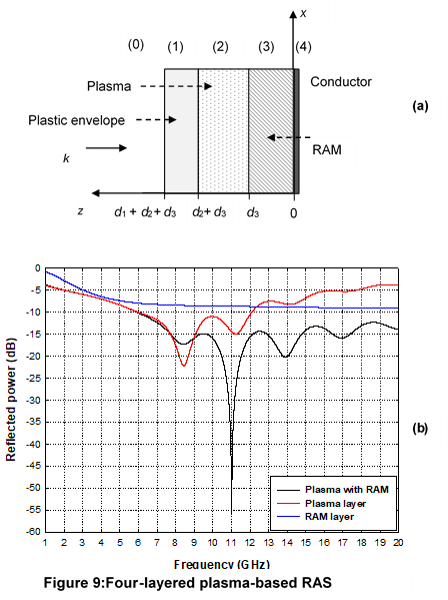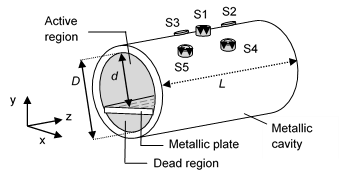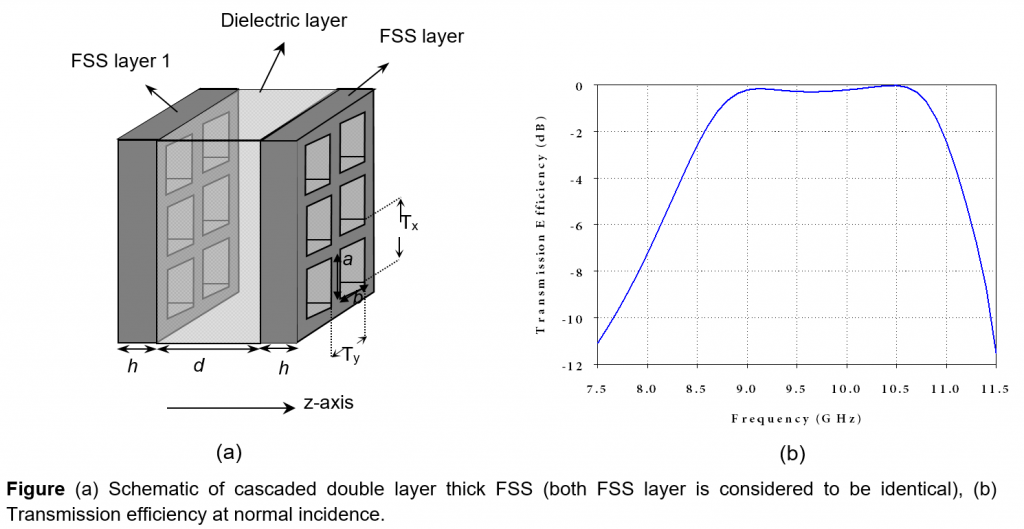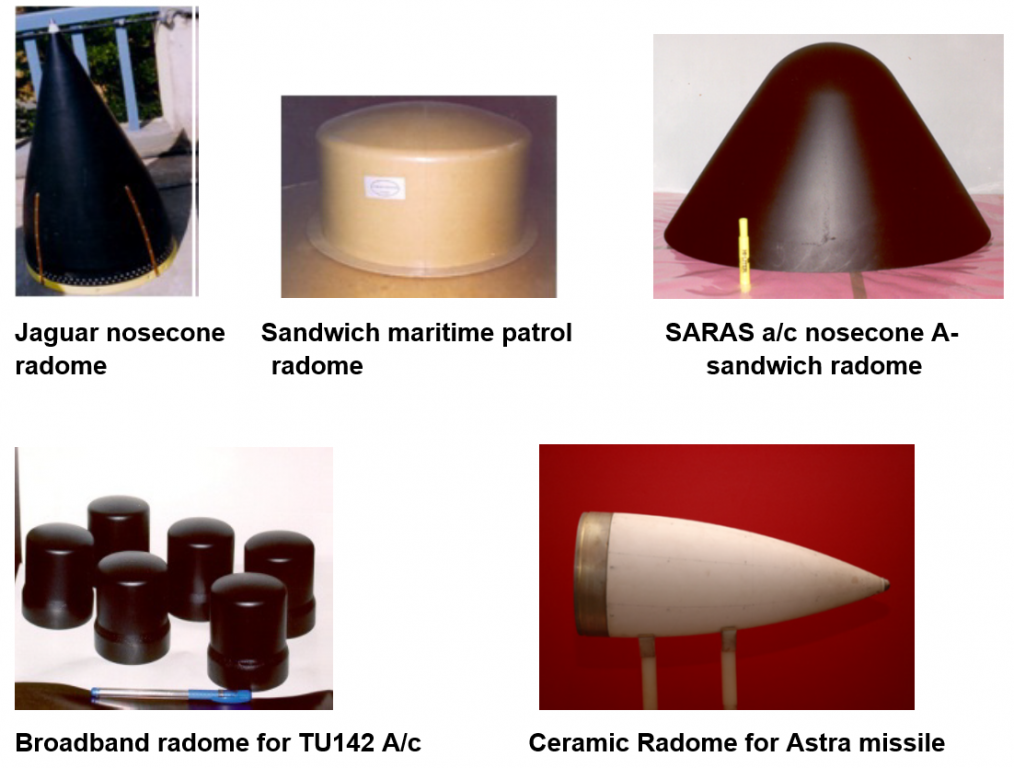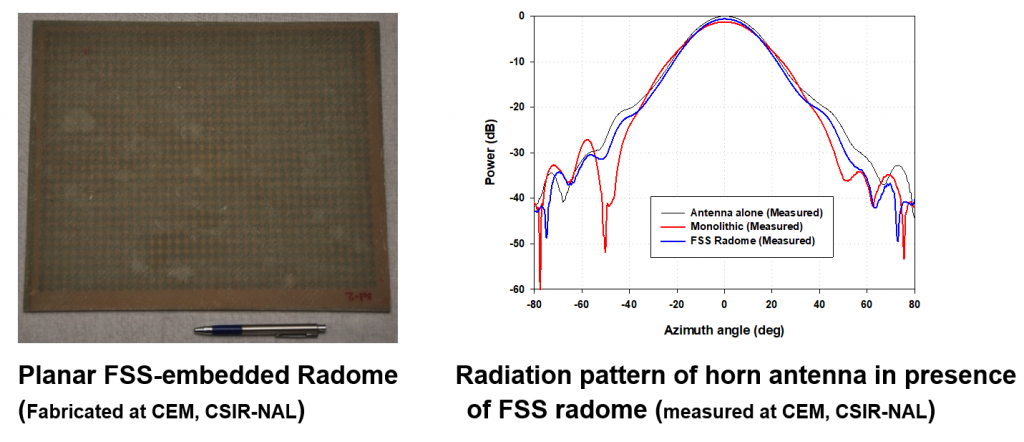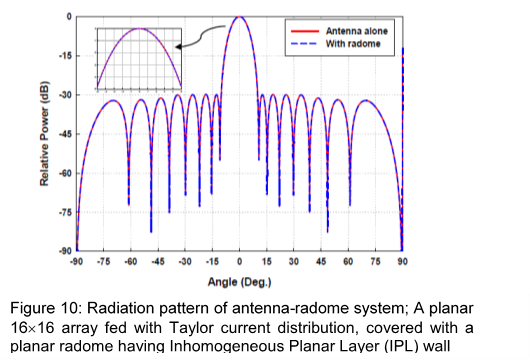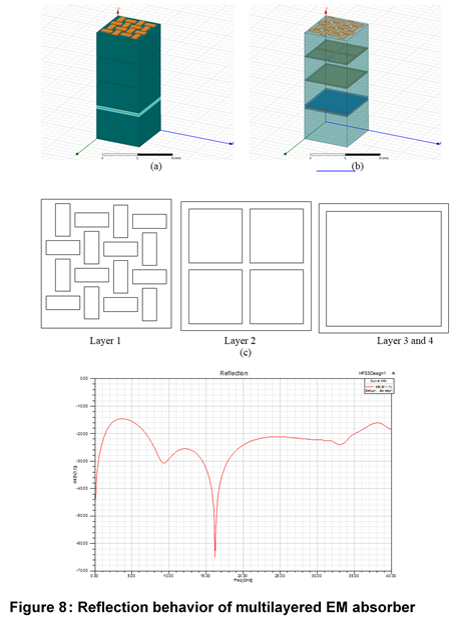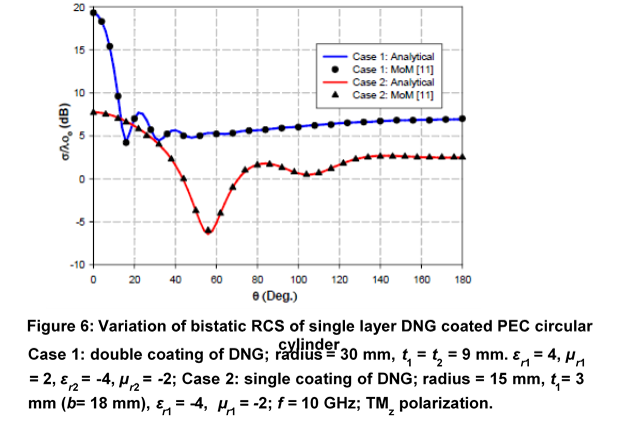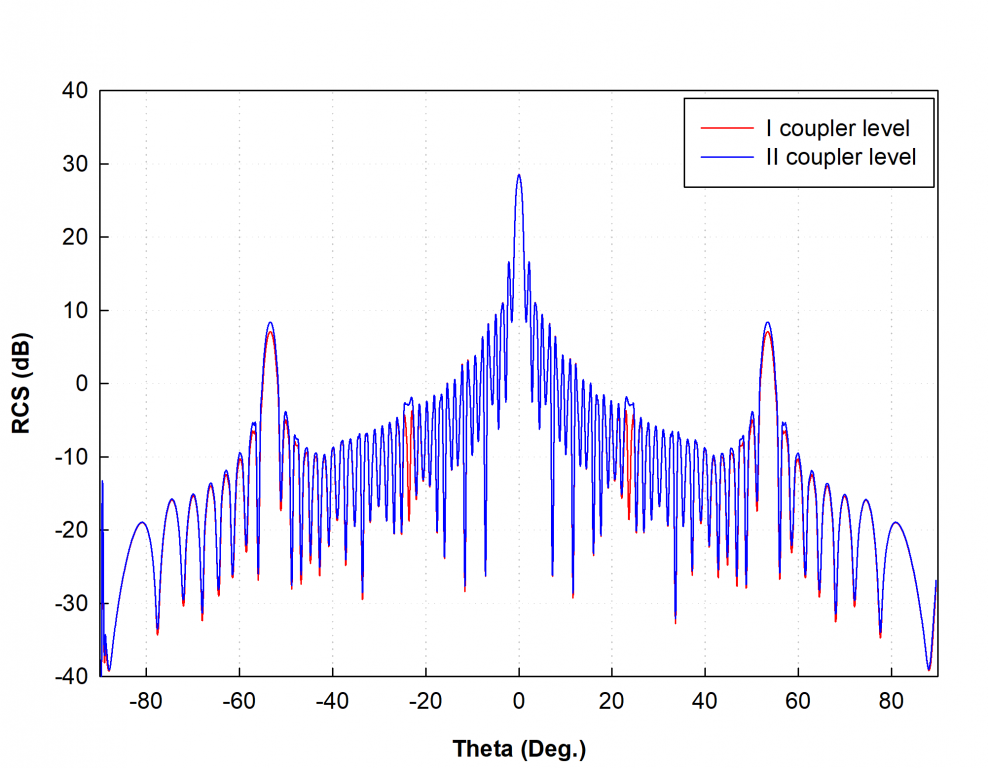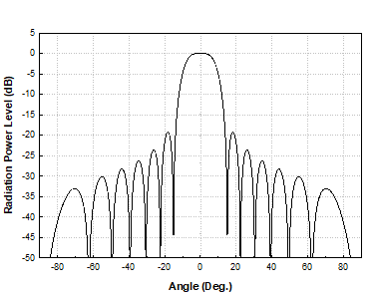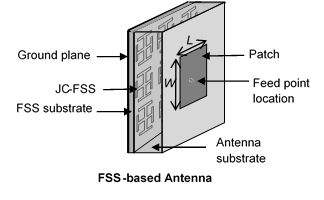
Transmission Line Transfer Matrix (TLTM) and equivalent circuit model
In order to full-fill the demand of high performance radome in modern radar antenna systems at millimeter wave frequency regime. The design and analysis of metamaterial based frequency selective surfaces is initiated. In light of this, various metamaterial based novel FSS structures are designed and analyzed based on transmission line transfer matrix (TLTM) method for broadband and multiband radome and RAS applications in microwave as well as millimeter wave frequency regimes.
Equivalent circuit model is used to analyze the FSS unit cell as it gives physical insight into the problem. This method is used to analyze FSS based radome, antennas, and RAS structures.
Specifications
- These methods are more accurate for single or multilayered FSS structure having regular shaped elements.
- Provides immediate (less CPU time and memory) knowledge of the electromagnetic characteristics of a given FSS structure.
- Capable of analyzing FSS, radomes, RAS, and antennas using these methods
- Developed software package (CSIR-NAL Multilayered Metamaterial and Dielectric FSS Software Package: Copyright ref. no. SW-7583/2013) for designing planar radome and RAS embedded with metamaterial.
Major milestones / results of this technique:
Design and analysis of FSS-embedded radome:
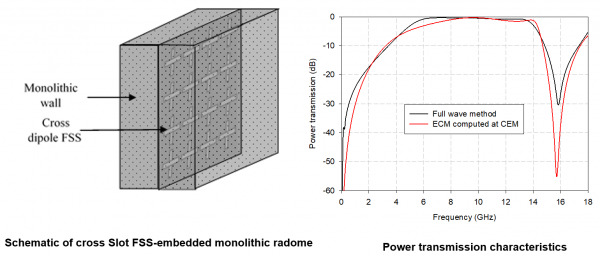

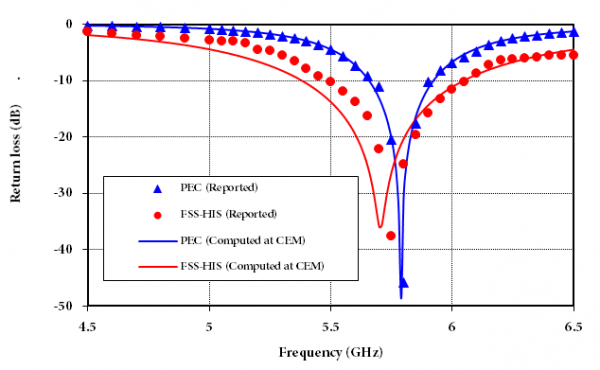
Return Loss characteristics of FSS-based antenna
Ref: Shiv Narayan and R. M. Jha, “Electromagnetic techniques and design strategies for FSS structure applications,” IEEE Antennas and Propagation Magazine, vol. 57, no. 5, pp. 135-143, Oct. 2015. http://ieeexplore.ieee.org/document/7327346/

 English
English हिन्दी
हिन्दी